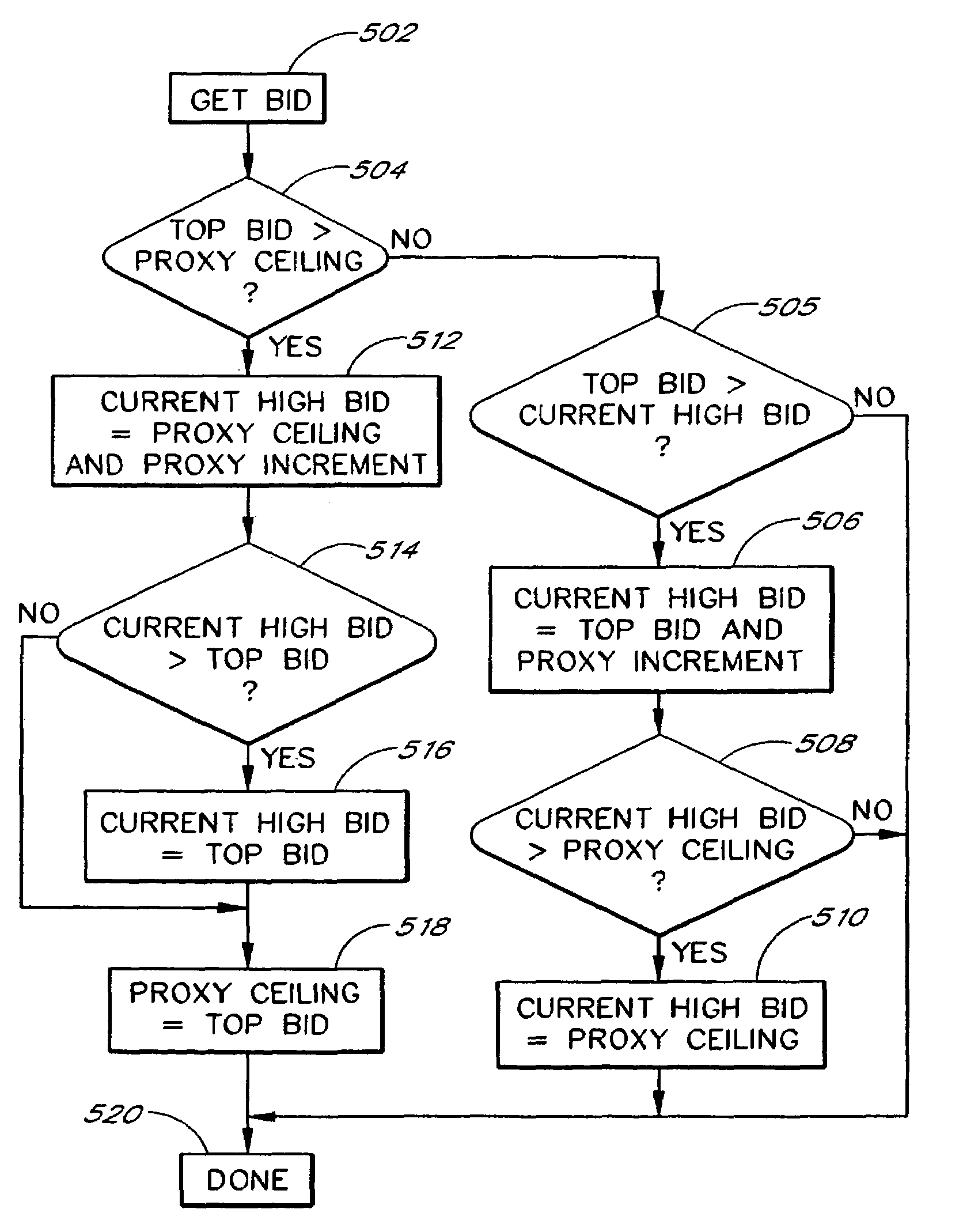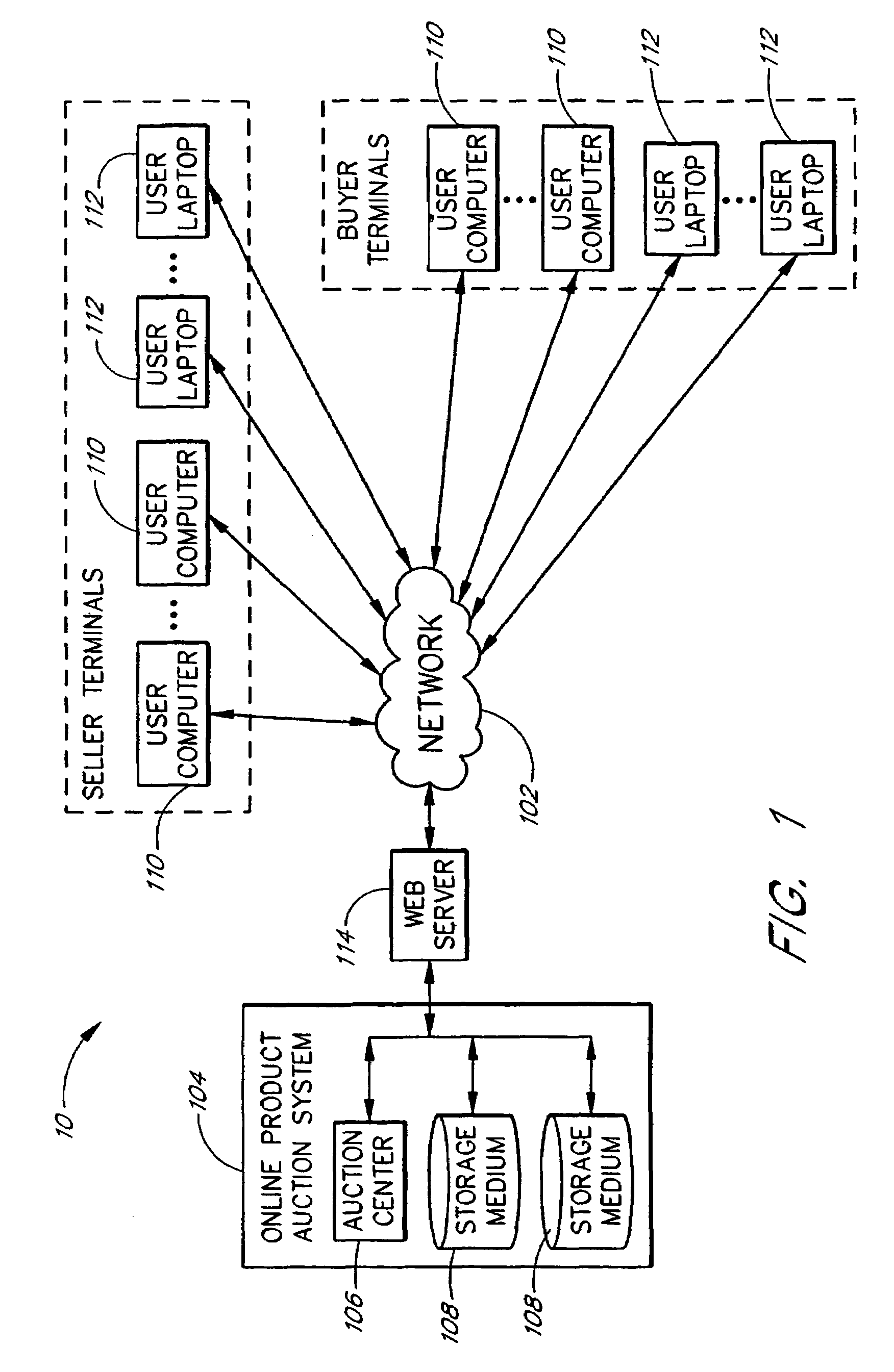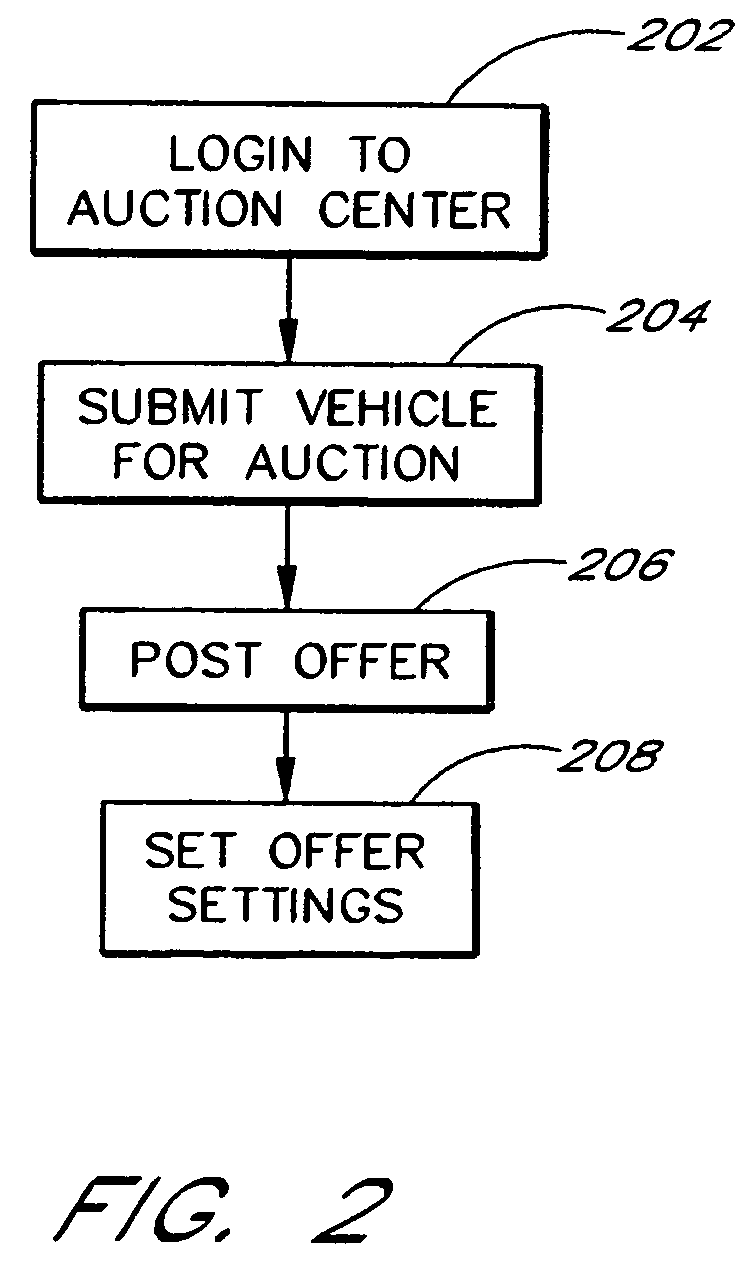Continuous online auction system and method
a technology of online auction and system, applied in the field of system and method for conducting transactions, can solve the problems of inefficient determining the value of each product in such a short period of time, adding increased inefficiencies in the distribution channel between the seller and the buyer, and disadvantageous availability of products to the interested bidders, etc., to achieve the effect of facilitating efficient utilization of both the seller's and the bidder's resources
- Summary
- Abstract
- Description
- Claims
- Application Information
AI Technical Summary
Benefits of technology
Problems solved by technology
Method used
Image
Examples
Embodiment Construction
[0034]In one embodiment, an online product auction system includes an auction center. The auction center provides a network connection to which one or more seller terminals and one or more buyer terminals, as well as other network devices, may advantageously be networked. The auction center may advantageously utilize a web server to provide a network connection over a public network such as the World Wide Web (“www”) or a private network. The auction center includes information regarding one or more products and facilitates the auctioning of the products by enabling potential buyers of the products to bid on the products by utilizing the buyer terminal.
[0035]Several modules will be described hereafter. The modules may advantageously be implemented as one or more computer program modules configured to reside on an addressable storage medium operably connected to one or more microprocessors. The modules may advantageously be configured to execute on the one or more microprocessors. An...
PUM
 Login to View More
Login to View More Abstract
Description
Claims
Application Information
 Login to View More
Login to View More - R&D
- Intellectual Property
- Life Sciences
- Materials
- Tech Scout
- Unparalleled Data Quality
- Higher Quality Content
- 60% Fewer Hallucinations
Browse by: Latest US Patents, China's latest patents, Technical Efficacy Thesaurus, Application Domain, Technology Topic, Popular Technical Reports.
© 2025 PatSnap. All rights reserved.Legal|Privacy policy|Modern Slavery Act Transparency Statement|Sitemap|About US| Contact US: help@patsnap.com



